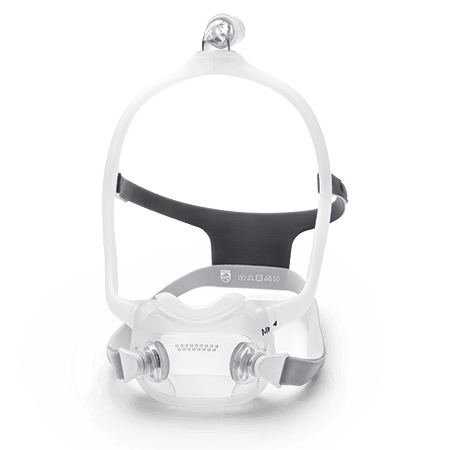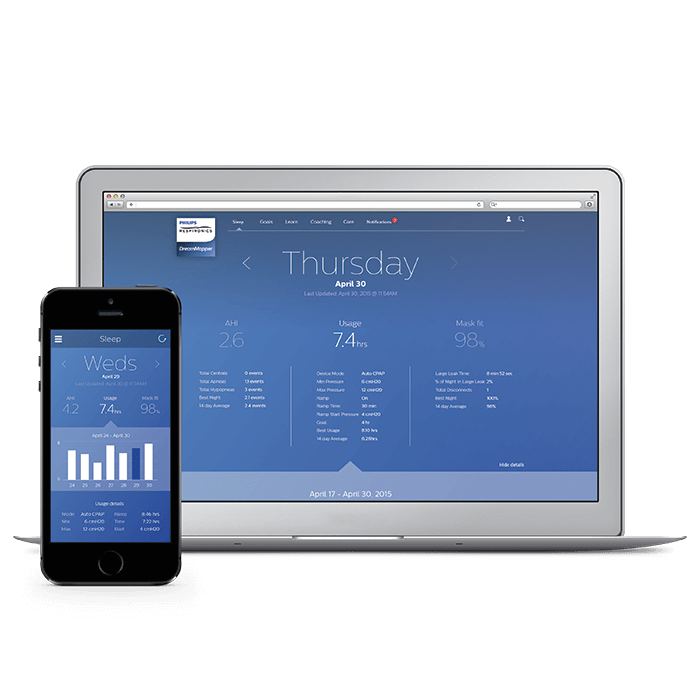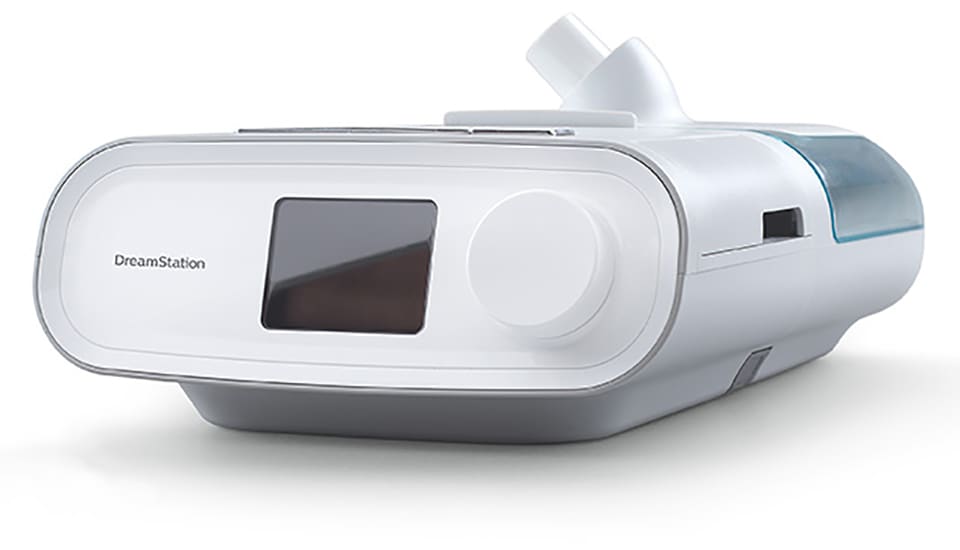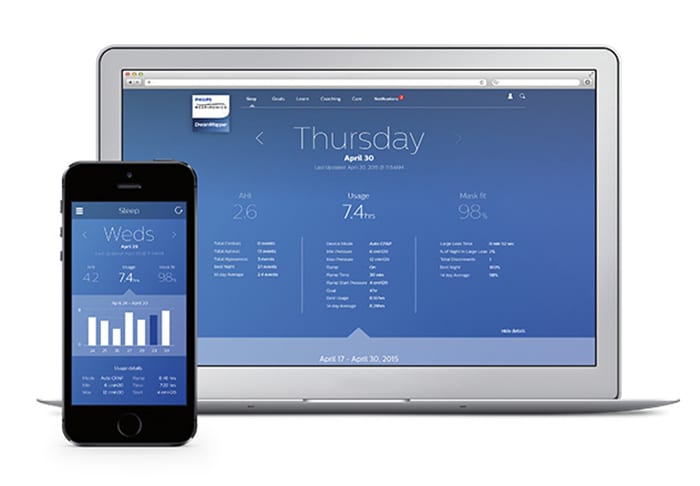Comfortable, patient-driven sleep apnea therapy solutions to help you get the sleep you need
Dream Family CPAP therapy


Comfortable, patient-driven sleep apnea therapy solutions to help you get the sleep you need
Dream Family CPAP therapy
A revolution in comfort and design
Our Dream Family of masks, PAP machines and accessories are designed to make treating your sleep apnea easy and comfortable. So you get the kind of sleep you need to help you feel more like yourself every day.
DreamWear
Open-face design provides exceptional comfort with an optimal fit, freedom of movement and the ability to choose your most comfortable sleep position1-3




DreamStation
With easy-to-navigate menus, remote diagnostics, a compact profile and incredibly quiet operation
DreamStation Go
Reliable and portable PAP therapy, wherever you are, with all the comfort features you expect


DreamMapper4
As a mobile app and online software, DreamMapper provides daily progress reports, lets you track goals, provides tips and reminders
How to buy
Philips Dream Family is available from a number of retailers. Contact your homecare provider to request our products.
For assistance, call (844) 240-1649
Note: These products require a prescription. Consult your sleep therapy physician before ordering DreamWear masks and devices.
DreamWear masks

DreamWear masks look different because they are different. Designed to feel like you’re not wearing a mask at all, 1-3
DreamWear’s revolutionary design features minimalist tubing that runs from the top of the head to under the nose, so you can have the freedom to sleep in the position you’re most comfortable in1-3.
How to buy
Philips Dream Family is available from a number of retailers. Contact your homecare provider to request our products.
For assistance, call (844) 240-1649
Note: These products require a prescription. Consult your sleep therapy physician before ordering DreamWear masks and devices.
DreamStation sleep therapy machine
Make treating your sleep apnea simple, quiet and smart. More than a sleek design, DreamStation is responsive, informative, easy-to-use and connects remotely to your care team. In virtually every way, it’s designed to make you comfortable and to help you stay committed to your therapy.

How to buy
Philips Dream Family is available from a number of retailers. Contact your homecare provider to request our products.
For assistance, call (844) 240-1649
Note: These products require a prescription. Consult your sleep therapy physician before ordering DreamWear masks and devices.
DreamStation Go portable CPAP

Pack performance with the meticulously engineered portable PAP machine. DreamStation Go makes it simple to get the sleep you need to perform at your peak, wherever you are.
How to buy
Philips Dream Family is available from a number of retailers. Contact your homecare provider to request our products.
For assistance, call (844) 240-1649
Note: These products require a prescription. Consult your sleep therapy physician before ordering DreamWear masks and devices.
DreamMapper app personalized tracking tool
Sticking to therapy can be hard and requires true behavioral change, but don’t worry – you can do it. The free DreamMapper app can help reinforce your commitment to therapy. It communicates with your PAP machine and provides you with the personalized feedback you need to take an active role in your therapy.
Download the free app or login if you have an account

Frequently asked questions
- How many people in the United States have sleep apnea?
-
According to the American Academy of Sleep Medicine Frost and Sullivan report from 2016, approximately 12% suffer from obstructive sleep apnea, at least 29.4 million adults in the U.S. - 80% of which go undiagnosed.
- What is obstructive sleep apnea?
-
Obstructive sleep apnea is a condition in which a person stops breathing repeatedly through the night. Breathing stops because the throat or “airway” collapses and prevents air from getting into the lungs. Sleep patterns are disrupted, resulting in excessive sleepiness or fatigue during the day.
- What are the nighttime symptoms of sleep apnea?
-
- Loud or disruptive snoring
- Witnessed pauses in breathing
- Choking or gasping for air during sleep
- Restless sleep
- Frequent visits to the bathroom
- What are the daytime symptoms of sleep apnea?
-
- Early morning headaches
- Excessive daytime fatigue
- Poor concentration
- Depression or irritability
- Falling asleep during routine activities
- What should you do if you think you may have sleep apnea?
-
Evaluation by a doctor specializing in sleep disorders is recommended. Have a sleep study done. A sleep study can provide the doctor with information about how you sleep and breathe. This information will help the doctor to determine your diagnosis and treatment options.
- What are potential consequences of untreated sleep apnea?
-
There is possible increased risk for:
- High blood pressure
- Heart disease and heart attack
- Stroke
- Fatigue-related motor vehicle and work accidents
- Decreased quality of life
- What is the treatment for sleep apnea?
-
Most commonly, positive airway pressure (PAP) therapy is the treatment. It is noninvasive and can help with symptoms when used as prescribed. Less commonly, surgery, positional devices or oral appliances are used, which may be effective in certain cases. Any treatment plan should include weight loss if needed, exercise and avoiding alcohol, sedatives and hypnotics.
- What are the benefits of regular usage of PAP therapy?
-
Most PAP users who remain committed to treatment enjoy:
- Increased energy and attentiveness
- Fewer morning headaches
- Reduced irritability
- Improved memory
- Increased ability to exercise
- Lower blood pressure
- Decreased risk of strokes and heart attacks
- Increased effectiveness at home and at work
- Improved overall quality of life
- What does an apnea episode look like?
-
- How does PAP or CPAP therapy work?
-
CPAP (continuous positive airway pressure) provides a gentle flow of positive-pressure air through a facial mask to keep the airway open during sleep. As a result:
- Breathing becomes regular during sleep
- Snoring stops
- Restful sleep is restored
- Quality of life is improved
- Risk for high blood pressure, heart disease, heart attack, stroke and motor vehicle and work accidents are reduced
- What does a mask do?
-
Masks are used to deliver the air from the therapy device to you. A comfortable mask is a key factor in being able to use your treatment daily, so finding a mask that fits you and your lifestyle is important. Most masks have built-in exhalation ports that vent your exhaled air. Talk to your homecare provider about the different masks and headgear available.
- What does tubing do?
-
The tubing is used to carry the air from the therapy device to the mask. You should clean and inspect your tubing at least once a week to make sure it is clean, bendable and that is doesn’t have any tears. If you think your tubing is ready for replacement, contact your homecare provider.
- What do filters do?
-
Therapy devices come with filters. Some devices come with one regular filter and others come with two – one regular filter and one ultra-fine filter. See your device manual for details on caring for your filters.
- What does DreamMapper do?
-
DreamMapper is a mobile app that allows you to track your therapy progress so you can take an active role in your sleep apnea therapy. You can also access DreamMapper through any browser.
Need product support?
Are you a sleep professional?
References 1. DreamWear Under The Nose: 2. DreamWear Full Face: 3. DreamWear Silicone Pillows: 4. To see which CPAP and BiPAP devices are available with DreamMapper, visit here. 5. Philips conducted a VPH 10 step process. The project executed 4 rounds of interviews and surveys in Nov. 2010 through Feb. 2012. Over 300 live interviews and 400 survey respondents participated. 6. Design claim - The design of the mask is such that it does not contact the nasal bridge. 7. When compared to Philips 22mm Performance tubing 8. RTCA/DO-160G section 21, category M. For informational purposes only, not to replace physician's directions.










